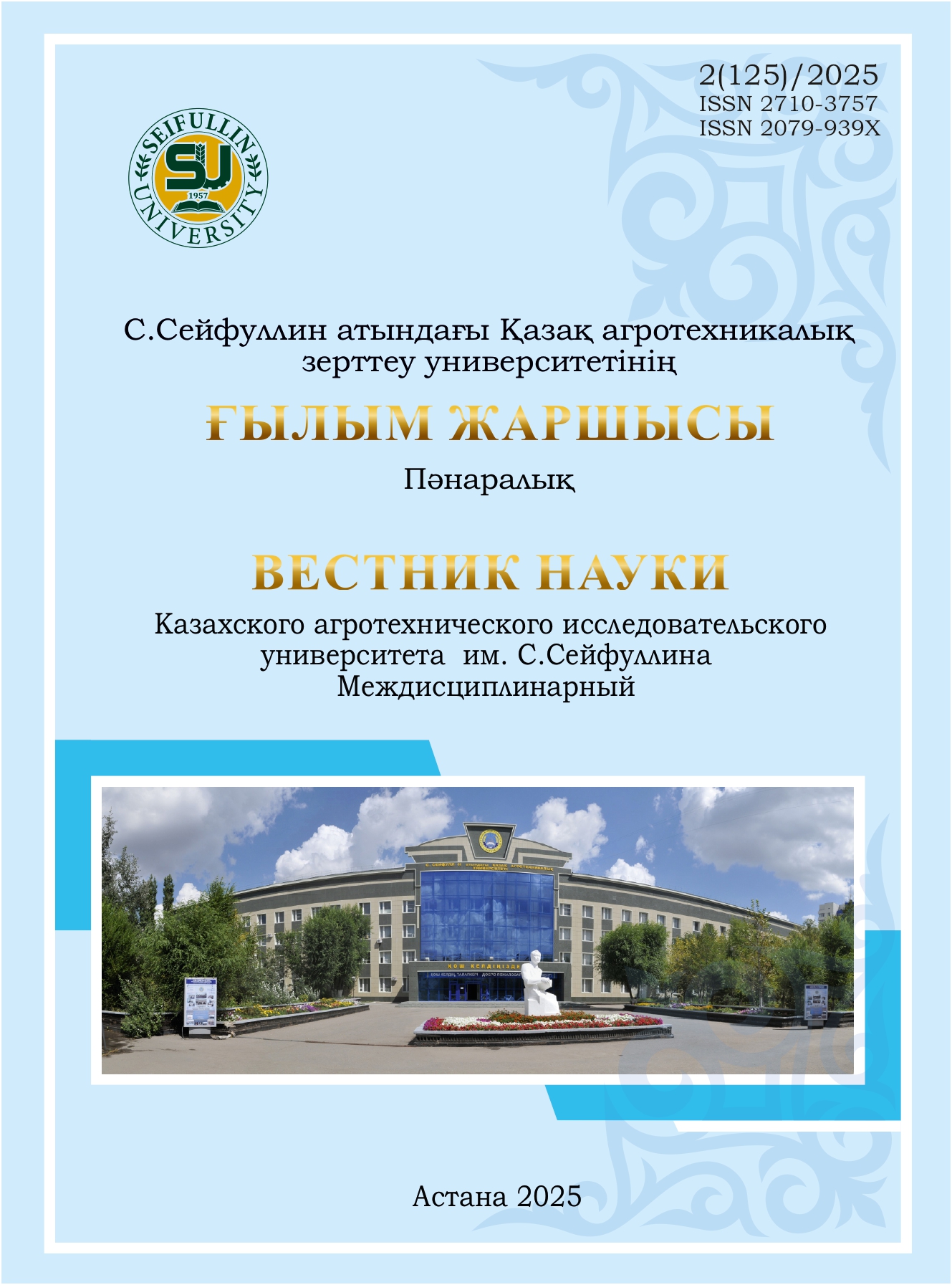Assessment of soil erosion using GIS technology and the RUSLE model
DOI:
https://doi.org/10.51452/kazatu.2025.2(125).1864Keywords:
soil erosion; RUSLE model; digital elevation model; fertile topsoil.Abstract
Background and Aim. Soil erosion currently causes significant damage to the environment. In agriculture, soil erosion (both wind and water) and anthropogenic activities lead to soil degradation by contributing to the destruction of the fertile topsoil layer. The aim of this study is to examine the condition of lands affected by water erosion in the Esil district of the Akmola region, based on the integration of geographic information systems (GIS) and the RUSLE model.
Materials and Methods. During the analysis, the following indicators and coefficients were considered: R – rainfall erosivity; K - soil erodibility factor; LS - slope length and steepness factor; C - land cover and management factor; P - erosion control practices, along with other relevant indicators.
Results. The analysis results indicated that the loss of the fertile soil layer in the area is at a moderate level (3.2 t ha⁻¹ year⁻¹). Across the entire study area, a low to moderate level of fertile soil layer washout (in the range of 0–20 t ha⁻¹ year⁻¹) is observed annually in 90.7% of cases, while the maximum soil loss reaches 9.3% (up to 40 t ha⁻¹ year⁻¹).
Conclusion. The proposed erosion assessment method provides a comprehensive understanding of the spatial distribution of soil erosion processes. It more effectively identifies areas with potential for future erosion compared to traditional assessment methods, and supports the implementation of sustainable soil management practices.

